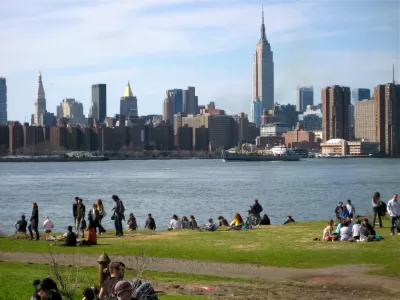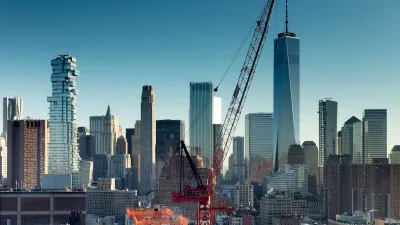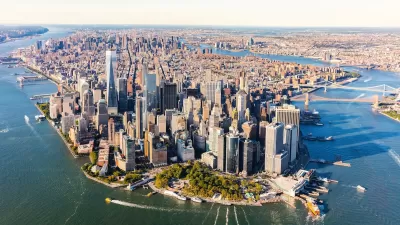After Governor Hochul’s statewide housing plan collapsed during budget talks, the city will weigh a series of zoning changes that could increase housing production and remove barriers to sustainability retrofits.

New York’s City Planning Commission will begin weighing three zoning amendments proposed by Mayor Eric Adams that would lower barriers for development, encourage more housing production, and help the city achieve its climate goals.
According to a Politico article by Janaki Chadha and Danielle Muoio Dunn, “The Adams administration is seeking to remove zoning barriers that inhibit the city’s carbon reduction goals, via a raft of changes that would, among other things, make it easier to pursue environmentally-friendly retrofits to buildings and legalize solar canopies on more than 8,500 acres of parking lots.”
Last week, opposition from largely suburban state lawmakers led to the collapse of Governor Kathy Hochul’s ambitious and controversial proposal to expand housing options and build 800,000 new housing units in New York State in the next decade.
As the article explains, the amendments will make their way through public review throughout the coming year. “The second zoning amendment, which is expected to enter public review this fall, seeks to lift arcane and outdated zoning rules that can be onerous to businesses and limit economic growth. And the third proposal, slated to move into public review next spring, would offer a density-bonus for affordable housing and make other changes to boost residential development around the city.”
FULL STORY: City to advance first of three zoning amendments

Montreal Mall to Become 6,000 Housing Units
Place Versailles will be transformed into a mixed-use complex over the next 25 years.

Planetizen Federal Action Tracker
A weekly monitor of how Trump’s orders and actions are impacting planners and planning in America.

DARTSpace Platform Streamlines Dallas TOD Application Process
The Dallas transit agency hopes a shorter permitting timeline will boost transit-oriented development around rail stations.

Study: 4% of Truckers Lack a Valid Commercial License
Over 56% of inspected trucks had other violations.

Chicago Judge Orders Thousands of Accessible Ped Signals
Only 3% of the city's crossing signals are currently accessible to blind pedestrians.

Philadelphia Swaps Car Lanes for Bikeways in Unanimous Vote
The project will transform one of the handful of streets responsible for 80% of the city’s major crashes.
Urban Design for Planners 1: Software Tools
This six-course series explores essential urban design concepts using open source software and equips planners with the tools they need to participate fully in the urban design process.
Planning for Universal Design
Learn the tools for implementing Universal Design in planning regulations.
City of Mt Shasta
City of Camden Redevelopment Agency
City of Astoria
Transportation Research & Education Center (TREC) at Portland State University
US High Speed Rail Association
City of Camden Redevelopment Agency
Municipality of Princeton (NJ)





























